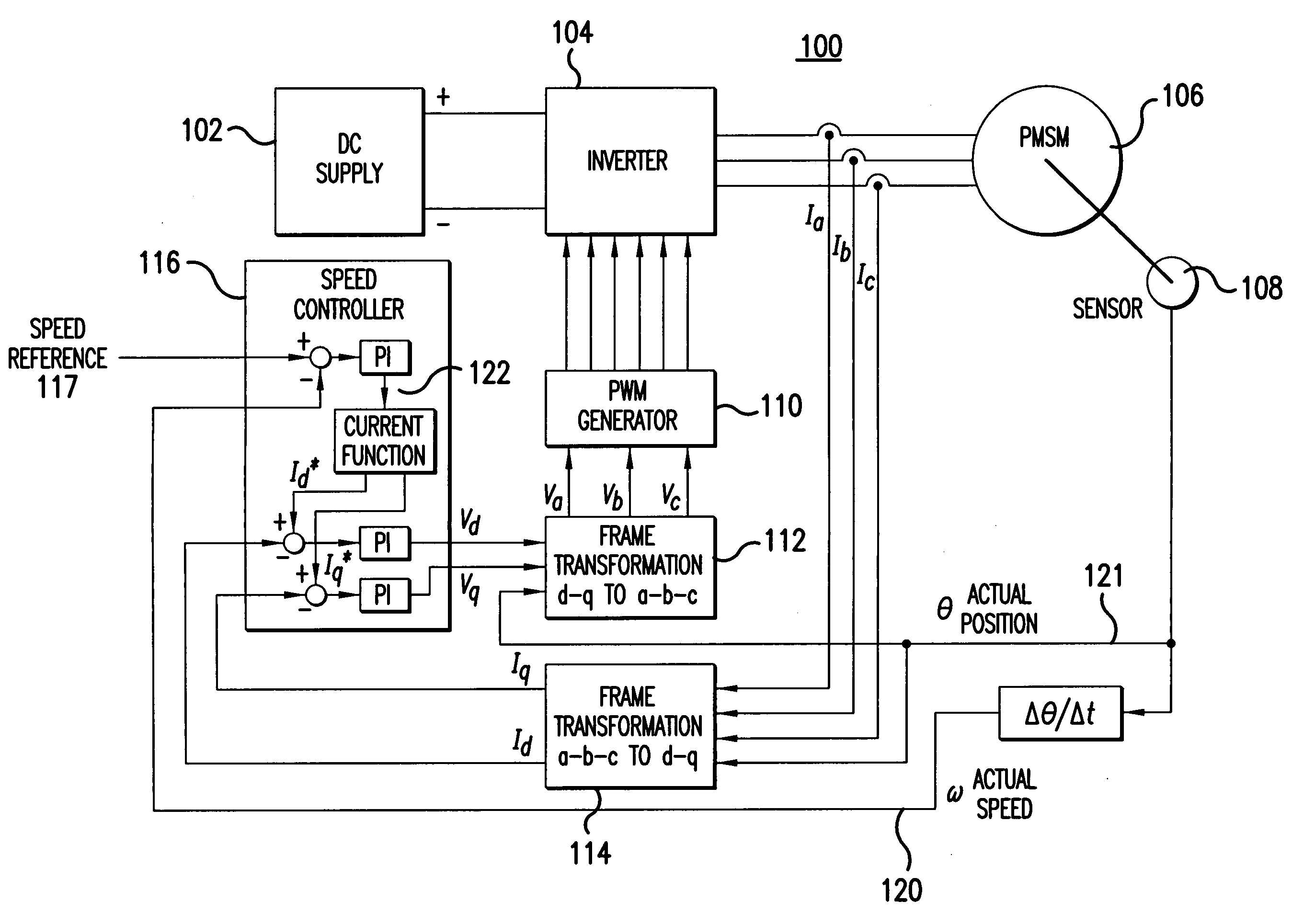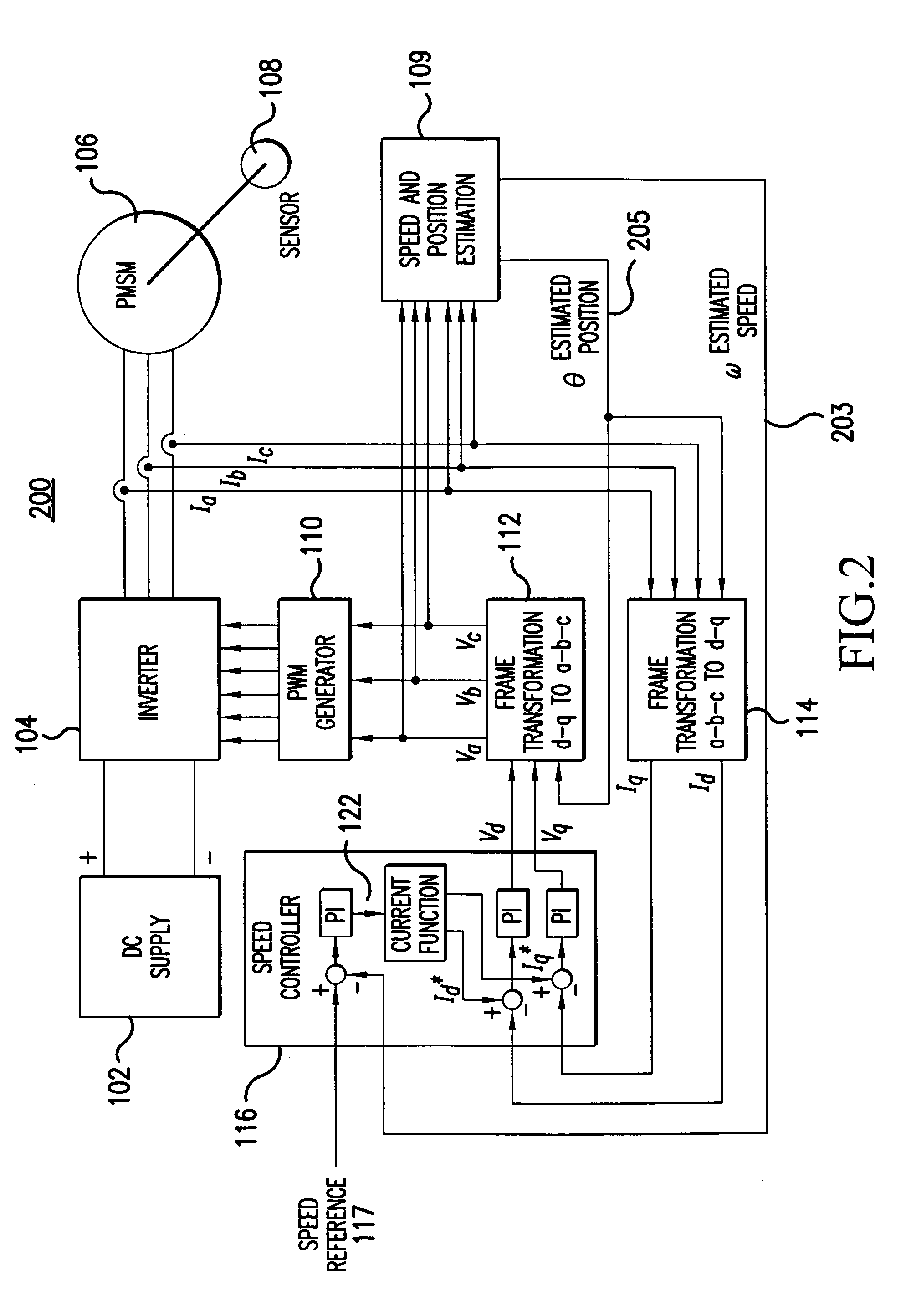Sensorless control method and apparatus for a motor drive system
a sensorless control and motor drive technology, applied in the direction of motor/generator/converter stopper, dynamo-electric converter control, instruments, etc., can solve the problems of reducing system reliability, increasing system complexity, and affecting the performance of the control system, and achieve the effect of fast calculations
- Summary
- Abstract
- Description
- Claims
- Application Information
AI Technical Summary
Benefits of technology
Problems solved by technology
Method used
Image
Examples
Embodiment Construction
Embodiments of the present invention are more specifically set forth in the following description, with reference to the appended drawings. In the following description and accompanying drawings like elements are denoted with similar reference numbers. Further, well-known elements and related explanations are omitted so as not to obscure the inventive concepts presented herein.
U.S. patent application Ser. No. 10 / 244,496 (“the '496 application”), filed Sep. 16, 2002 and titled “Position Sensor Emulator for a Synchronous Motor / Generator,” which discloses embodiments for deriving rotor position information from phase voltage signals output by main generator stator windings (stator phase windings) of a synchronous motor generator, is incorporated herein by reference.
The motor drive systems 100, 200 of FIGS. 1, 2 previously described along with the motor drive system of 1200 shown in FIG. 12 illustrate motor generator systems to which principles of the present invention may be appli...
PUM
 Login to View More
Login to View More Abstract
Description
Claims
Application Information
 Login to View More
Login to View More - R&D
- Intellectual Property
- Life Sciences
- Materials
- Tech Scout
- Unparalleled Data Quality
- Higher Quality Content
- 60% Fewer Hallucinations
Browse by: Latest US Patents, China's latest patents, Technical Efficacy Thesaurus, Application Domain, Technology Topic, Popular Technical Reports.
© 2025 PatSnap. All rights reserved.Legal|Privacy policy|Modern Slavery Act Transparency Statement|Sitemap|About US| Contact US: help@patsnap.com



